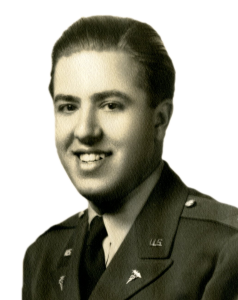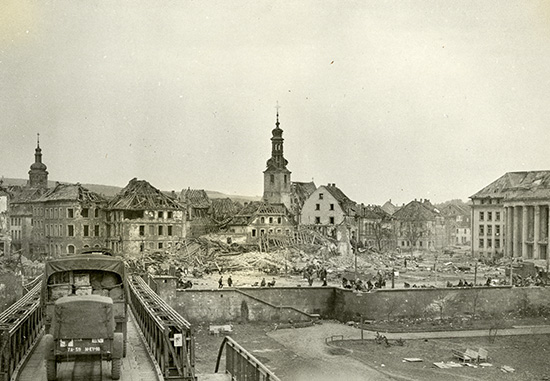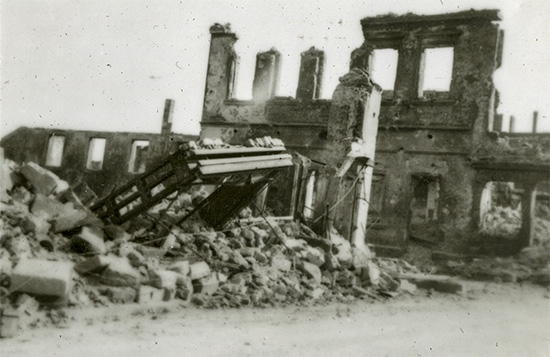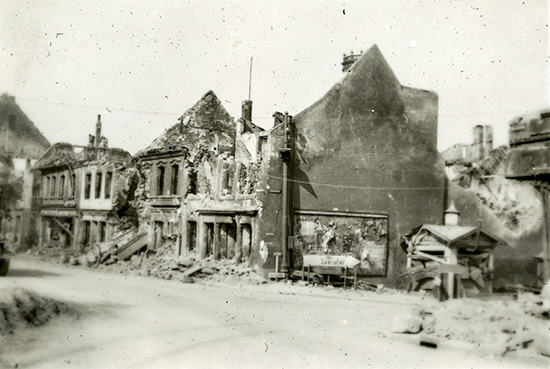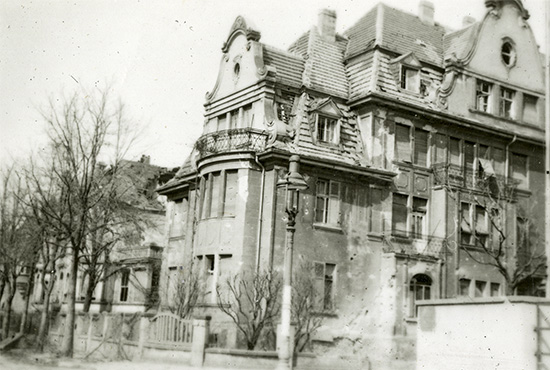March 31, 1945
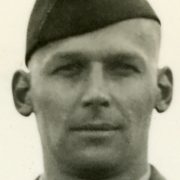 No letter from René on March 31, 1945. Here’s an excerpt from the journal of Dr. Philip Westdahl about the 59th’s journey from St. Avold, France to Saarbruken, Germany.
No letter from René on March 31, 1945. Here’s an excerpt from the journal of Dr. Philip Westdahl about the 59th’s journey from St. Avold, France to Saarbruken, Germany.
Our route from St. Avold [in French Lorraine] took us north through the town of Forbach, just south of the German border and the Saar River. Forbach was badly destroyed by bombing and artillery. Although its inhabitants resemble the Germans more than the French and claim no close ties to either, preferring to be called Lorrainians, French tri-color flags were flying from every intact building.
From Forbach north to Saarbrucken, the famous German “defense in depth” was clearly in evidence. On either side of the highway, spaced about every 20 yards, trenches had been dug and guns set up, probably recently by forced labor. These entrenchments extended all along the highway to the actual Siegfried line at the outskirts of Saarbrucken, a distance of about 10 miles.
This stretch of territory showed evidence of severe fighting. Buildings were destroyed and the fields were littered with dead horses and cows and wrecked vehicles. Here and there a crude cross with a German helmet atop marked the grave of a fallen German soldier.
Just outside of Saarbrucken we had our first glimpse of the famous Dragon’s Teeth of the Siegfried line. These consisted of a curving line of pyramidal-shaped concrete blocks, about 5 to 6 deep, each block about 4 to 5 feet high and about 2 feet thick. These started at the edge of the highway and stretched on either side in a line as far as the eye could see. These were supplemented by huge anti-tank ditches. Across the highway, open at the time, was a huge, hinged, steel gate. In the high ground immediately behind the gate there were 6 to 8 beautifully camouflaged concrete pill boxes. All in all it presented a formidable appearance, but the fact remains that it had been breached.
Once beyond the Siegfried line we were in the city of Saarbrucken itself. It is impossible to describe the extent of the destruction of this German city. My first impression after overlooking the city from the height over which we entered it was one of incomprehensible amazement. This was no longer a city, but rather a huge graveyard of buildings. It reminded me of a forest which had been burnt over by a massive fire, leaving a blackened, unsightly looking mess of stumps with a few isolated charred skeletons standing. It reminded me of pictures I had seen of sections of San Francisco after the 1906 earthquake and fire. A few sections of the city were spared such total destruction, but they were in the minority.
Except for the continuous stream of military traffic moving up to the front and the American soldiers in town, the streets were deserted and a death-like pall hung over them. The only civilians present were those forming a large group of Russians, Poles, Yugoslavians and Italians who had been doing forced labor in Germany. They formed a motley looking crew with their variation in dress and shabby belongings. The task of relocating these people will be a great one.
.

